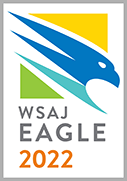At Krutch Lindell and Mark Lindquist Law, we are actively investigating the Jeju Air Flight 2216 crash.
As aviation lawyers, one of the most common questions we are asked is “When will they tell us what caused the crash?”
There are two parts to the answer: when will they answer and who are they?
Answers to Jeju Crash Questions
As to when, typically these investigations take months or years before solid answers emerge.
As to who are they, that depends. Jeju Air Flight 2216, which originated in Bangkok, was attempting to land at Muan International Airport in South Korea when the aircraft went off the runway and crashed into a wall. The resulting explosion killed nearly everyone on board.
Video of the crash shows the landing gear on the Boeing 737 was not extended. Video also seems to indicate the aircraft’s control surfaces, such as flaps and speed brakes, were not configured for landing and touchdown. Without proper configuration, an aircraft such as the 737 will touch down and roll out at an unsafe speed, increasing the risk of a runway overrun as happened here.
In summary, a Boeing 737 manufactured in the United States crashed in South Korea. Therefore, both nations will be involved in the investigation, per the “Chicago Convention” also known as the Convention on International Civil Aviation. The United States and South Korea are both signatories of the International Civil Aviation Organization.
More specifically, if a crash occurs in a foreign country and involves a plane designed or manufactured in the United States, then the foreign country is responsible for the investigation, but the United States National Transportation Safety Board (NTSB) participates. The NTSB will provide consultation, identify safety deficiencies, and appoint technical advisors.
Boeing’s Investigatory Role
In the Flight 2216 crash, the NTSB will almost certainly appoint Boeing as a technical advisor. In the past, Boeing would freely provide information related to the design, certification, and manufacture of its aircraft. However, the Alaska Airlines Flight 1282 door plug blowout at 16,000 feet – our firms are both representing numerous passengers on that flight – showed a different side of Boeing, the side that is concerned about criminal liability.
In the wake of the 737 MAX 9 crashes, and the Max 9 door plug blowout, Boeing has begun ignoring the mandates of investigation protocol. We expect to see guardrails placed on Boeing’s participation in the Flight 2216 crash.
Contact Us With Questions
Our legal team is happy to answer questions you may have about the crash itself, the investigation process, and what claims the families of passengers may have under United States law. https://www.krutchlindell.com/contact/

